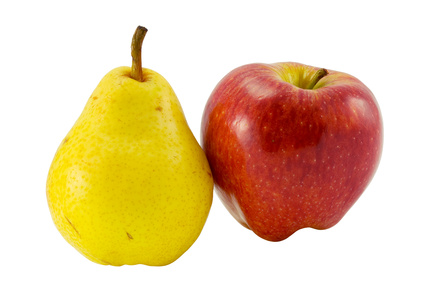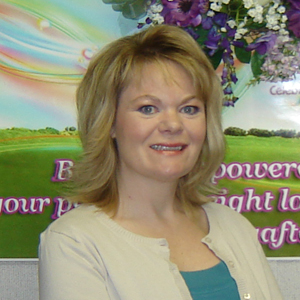|

Whatever else you have on your mind,
Wherever else you think you're going, Stop for a moment and
look where you are:
You Have Arrived!
I believe in you.
You deserve to be healthy.
You deserve to be kind to yourself.
You deserve to achieve your greatest level of success with weight loss surgery when you harness your inner resources.
--Kaye Bailey
5 Day Pouch Test Owner's Manual
|
|
|
New Protein & Dietary Support Products!
Try them ALL!  Value Price: Value Price:
$13.95 
Fast Shipping, Quality Products,
Committed to Your
Lasting WLS Success
LivingAfterWLS General Store
Coupon Code: FALL2012 Take $2
off any order at
Checkout!!
|
The Real Goal:
Improve your health;
Celebrate Your Journey

Remember, obesity is a chronic disease, like diabetes or hypertension. In a sense, patients are struggling against their own body's coordinated effort to stop them from losing weight. Acknowledge the challenging nature of weight control by adopting problem-solving responses to goals that are not fully met. Remember, the examination of circumstances leading to unmet goals can lead to new and more effective strategies. Improvement of one's health is the goal of obesity treatment.
Use simple charts or graphs to summarize changes in weight and the associated risk factors that were present at the time treatment for obesity was sought. Looking at the big picture -- beyond body weight -- is motivational in one's ongoing quest to improve health. --National Institutes of Health |
|
Why does CDC use BMI to measure overweight and obesity?
Calculating BMI is one of the best methods for population assessment of overweight and obesity. Because calculation requires only height and weight, it is inexpensive and easy to use for clinicians and for the general public. The use of BMI allows people to compare their own weight status to that of the general population.
More from the CDC
|
|
Definitions to Describe Body Weight
The following are common definitions used by the health care industry to discuss body weight and health.
body composition: the proportions of muscle, bone, fat, and other tissue that make up a person's total body weight.
body mass index (BMI): an index of a person's weight in relation to height; determined by dividing the weight (in kilograms) by the square of the height (in meters).
central obesity: excess fat around the trunk of the body; also called abdominal fat or upper body fat.
intra-abdominal fat: fat stored within the abdominal cavity in association with the internal abdominal organs, as opposed to the fat stored directly under the skin (subcutaneous fat).
overweight: body weight above some standard of acceptable weight that is usually defined in relation to height (such as BMI).
underweight: body weight below some standard of acceptable weight that is usually defined in relation to height (such as BMI).
waist circumference: an anthropometric measurement used to assess a person's abdominal fat.

Apple and Pear Body Shapes Compared
Most of readily know body shapes are compared to apples and pears. Each body shape presents unique ody weight and fat distribution, as described by apple and pear shapes, correlate with disease risks and life expectancy according to the National Heart, Lung, and Blood Institute. Understanding body shape and the health risks associated with it improves our ability to take pro-active measures to decrease disease risk.
Upper-body fat is more common in men than in women and is closely associated with heart disease, stroke, diabetes, hypertension, and some types of cancer. The classic "beer belly" is considered an "apple" shape revealing upper-body fat.
In contrast, lower-body fat is more common in women than in men and is not usually associated with chronic diseases including cardiovascular disease, diabetes, and hypertension, to name a few.
Measuring Shape:
The waist-to-hip ratio measurement helps assess risk level associated with being apple shaped. The American Council on Exercise describes this measurement as the smallest part of your waist in inches, divided by the largest part of your hips in inches. If your ratio is less than 0.88 for a woman, and 0.95 for a man, your risk is lower. The National Heart Lung and Blood Institute states that women should aim for a waist less than 35 inches, and men for a waist less than 40 inches for optimal health.
Read more:
Livestrong
|
|
Connect!
|
For you "old fashioned" Neighbors: Kaye Bailey PO Box 311 Evanston, WY 82931 Because snail mail is swell!
|
Gastric Sleevers: Welcome to LivingAfterWLS
In the weight loss surgery community we are seeing more patients undergoing the gastric sleeve procedure. Many "Sleevers" have joined our LivingAfterWLS network recently and I personally wish to welcome you here. I believe you will find the LivingAfterWLS Neighborhood to be one of the few prejudice-free zones for connecting with other WLSers on the Internet. We welcome all people to our community regardless of weight or weight management method. As the sleeve procedure becomes more common I hope our Sleevers will grow in numbers and actively share their experience so that we may continue to build our body of knowledge for healthy weight management. I invite you to participate in all the Neighborhood discussions and point you to the Heart on Your Sleeve forum dedicated to the gastric sleeve procedure.
Follow this path:
The Neighborhood >> Town Square Knowledge Center >> WLS Chat >> Heart on Your Sleeve
A special forum dedicated to those who undergo gastric sleeve procedures. Named "Heart on Your Sleeve" because so many of us invest our hope and our hearts in a procedure to take back our life. Please share you knowledge and experience here.
To learn more about the gastric sleeve procedure read this article: Benefits of Sleeve Gastrectomy in the Treatment of Morbid Obesity
|
Beyond the Scale
Accepting Healthy Body Weight
 In spite of In spite of cultural appeal to our vanity the primary reasons for achieving and maintaining a healthy weight should be health and longevity. "Even if our society were to accept fat as beautiful," writes Ellie Whitney and Sharon Rady Rolfes in Understanding Nutrition, "Obesity would still be a major risk factor for several life-threatening diseases. For this reason, the most important criterion for determining how much a person should weigh and how much body fat a person needs is not appearance but good health and longevity."
Knowing this we can include an acceptance and appreciation of our overall health as part of our weight loss surgery experience and avoid the pitfalls of the single arbitrary finish line we call goal weight. Here are some helpful tips for accepting your healthy body weight:
Value yourself and others for human attributes other than body weight. Realize that prejudging people by weight is as harmful as prejudging them by race, religion, or gender.
Use positive, nonjudgmental descriptions of your body.
Accept positive comments from others. Dismissing a compliment is hurtful to the person giving it and lowers your self-esteem as well.
Focus on your whole self: your intelligence, social grace, spiritual connections, and professional and scholastic achievements.
Become physically active, not because it will help you get thin but because it will make you feel good and enhance your health.
Seek support from loved ones. Tell them of your healthy lifestyle goals and identify how they can support you in your efforts. Connect with others sharing the same goals.
Join the Safe Haven Circle of Friends
|
|
|
|
LivingAfterWLS Digest
Calculating Goal Weight Range
The Process in Achievable Steps
September 6, 2012
LivingAfterWLS, LLC - All Rights Reserved
|
Greetings!
 In our weekly digest on August 27th I presented my method for calculating a GWR --Goal Weight Range-- for weight loss rather than a single goal weight. I have developed this formula while working with my fellow weight loss surgery patients so that we may move beyond a randomly selected goal weight to the more important goal of improving our health. In today's digest we look at how GWR may be used for those who fall into the "Extreme Obesity" or "Super Morbidly Obese" category. When a person has a goodly amount of weight to lose they benefit from shaping smaller goals that lead to the greater objective or ultimate goal. When taken alone the ultimate goal (lose 200 pounds, for example) poses an insurmountable climb up a profoundly steep hill. Using GWR Phases allows us to focus on positive changes and adapt a problem-solving approach toward the shortfalls. Weight management is a journey, not a destination. If you fall into one of the heavier categories of BMI please take a look at the GWR Phases as detailed below. I think you will have a new enthusiasm for setting and achieving goals when they are based on rational data to target attainable milestones.
Remember: The objective with GWR is to create an acceptable range based on data and realistic thinking with some positive confidence building opportunities along the way.
Over the years I've heard all kinds of rationale for the randomly selected goal weights people pursue. Just to lighten the mood here are a few of the outrageous and irrelevant reasons people have shared for setting their goal weight. Usually these statements follow the disclaimer, "I know it is silly but..."
"I want to get to 120 pounds and size 6 because it sounds so wonderful just saying it: I weigh 120 pounds and wear a size 6. I love how that sounds!"
-- 31 year old woman, starting weight 285, BMI 49
"I want to get to 135 pounds so I can weigh less than my twin sister who has never had a weight problem."
--44 year old woman, starting weight 238, BMI 41
"I want to get back to 160 pounds, that's what I weighed when I left the Army and I was in the best shape of my life." --Six-Foot tall 58 year old man, starting weight 327 pounds, BMI 47
"My class reunion is next summer and I want to weigh less than I did at graduation 20 years ago so my goal is 140 pounds."
--38 year old woman, starting weight 278, BMI 45
These reasons do sound silly when put in writing, but honestly, I know I had a few silly things that motivated my weight loss including revenge against all the mean girls who teased me in high school. Perhaps you too are fueled by a few non-health related goals. So while we can harness the energy that comes from silly motivation it is also important to set viable goals based on improved health and greater rewards. These are the things that will sustain us on the long journey when the rewards of silliness become trite.
Best Wishes Neighbors - We are all in this together!
Kaye
KayeBailey@LivingAfterWLS.com
PS- Be sure to review this month's very important 5 Day Pouch Test Bulletin in our archive now:
Protein First - We are not getting Enough.
Learn why this rule is so important and why most of us are failing.
The Lies & Myth of Goal Weight. LivingAfterWLS Weekly Digest last week discussed the pitfalls associated with a single goal -- goal weight -- following weight loss surgery. Please take a look to learn why few patients ever reach goal weight, why we use weight as a measure of health, and learn a new way to set milestones in weight loss: Goal Weight Range. Newsletter Archive. |
|
Newly Published July 2, 2012 ~  All New! All New! 2nd Edition 5 Day Pouch Test Owner's Manual by Kaye Bailey.
The complete 5 Day Pouch Test plan including inspiration, instructions, and recipes in Kaye classic empowering style. 180-page easy to read paperback with hints, tips and encouragement that enables you to take charge of your weight loss surgery tool. 2nd Edition includes new guidelines from the FDA, USDA, and the ASMBS. 16 new 5DPT recipes; more FAQ's; more inspiration from Kaye. Improved format. Same great plan shared with Kaye's encouragement and enthusiasm.
Sale Price $22.95 ~Free Goody Bag ($1.95 Value) w/purchase Buy Now |
Super-Morbidly Obese: BMI >40
The Goal Weight Range Works for You Too! Here's How:
Last week when we published the weekly digest about Goal Weight Range rather than pursing a single goal weight we received a tremendous amount of feedback both favorable and critical. One thing I failed to include in the previous newsletter was applying the GWR principles in phases to facilitate weight loss for people who fall in the clinical definition of "Extreme Obesity" having a BMI of greater than 40. Patients faced with a tremendous amount of weight to lose benefit from the behavioral technique called "shaping" in which a series of short-term goals are set and met bringing them closer to the ultimate goal. Below is a Question & Answer from the LivingAfterWLS Neighborhood that addresses the question of Goal Weight Range as it is applied to the super-morbidly obese: by Kaye BaileyFrom Kath1210 in The Neighborhood: "I just read and used the information from the Goal Weight Range article to try to determine a reasonable and feasible goal weight, but I don't think it works for someone like me (starting with a high BMI). Am I doing something wrong?"Dear Kath1210: I am so tickled you did the Goal Weight Range worksheet. I am so glad you presented this question. This tool actually is more favorably received and responded to by people with a very high BMI. Often when patients focus on weight loss goals that exceed 200 pounds the journey seems impossible and very long, yet surgeons and nutritionists set these seemingly unattainable goal weights in stone. I'm not sure what your height is, but you may have been told your goal weight is 165-185. That is a tremendous amount of weight to lose. Not impossible. And quite achievable if smaller weight loss phases or goals are identified. I worked some numbers using your beginning weight of 385 and assuming a height of 5'6" -- hope you don't mind. Phase 1 - Initial Weight LossWeight Range will be (385 x .10 = 38.5 lbs.) We'll round up to 39 pounds weight range. Beginning BMI: 62. We want to release enough weight to get your BMI to 52. (62-10=52.) At 5'6" and BMI of 52 your weight will be 302. This is the high end of your weight range. Subtract 39 from 302 to find your low weight range of 263. Goal Weight Range: 263-302 When you reach 282 pounds (a 103 pound loss- GREAT JOB) you will calculate a new GWR. 282 is the middle of your current range of 263-302. Phase 2 - Continued Weight LossWeight Range will be (282 x .10 = 28.2 lbs.) We'll round down to 28 pounds weight range. At your new weight of 282 your BMI is 47. You have the knowledge & power to release enough weight to get you to BMI 37. (47-10=37) At 5'6" and BMI of 37 your weight will be 222. This will be the high end of your weight range. Subtract 28 from 222 to find your low weight unit of 194. Phase 2 Goal Weight Range: 194 - 222 pounds. The middle of this range is 208. When you reach that milestone you have lost 74 pounds in Phase II for a total loss of 177 pounds!! Look at you go. Time to make a new GWR!! Phase 3 - Exiting the "Obese" CategoryWeight range will be (208 x .10 = 20.8) We'll round up to 21 pounds weight range. At your new weight of 208 your BMI is 35. Instead of subtracting 10 from this number we will use your new goal BMI of 30 - which is the lowest number in the "Obese" category and a reasonable and healthy goal with massive weight loss. So, at BMI 30 your weight will be 180 pounds. That is your new MAINTENANCE high unit of Goal Weight Range. 180 - 21 = 159. 159 is your low weight unit for your MAINTENANCE Goal Weight Range. That will give you a BMI of 25. You can achieve 34 pounds lost in this phase for a total of 215 pounds lost!!! So for maintenance you will find your most comfortable weight between 159 and 180. Overall Numbers:
Beginning Weight : 385Maintenance Weight: 170 (median of 159-180)Total Weight Lost: 215Change in BMI: 62 Beginning: 28: Maintenance (34 Unit Drop!)I apologize that we didn't go into this detail in the newsletter. We felt it was complicated already without adding phases in our first attempt to explain it. But when you are looking at the big picture of 200+ pounds to lose it is more motivating to break it into smaller goals or phases. It is also important to note that each phase is likely to take the same amount of time even though the pounds to lose decreases with each phase. This is due to the body adapting its metabolic process to hold onto body fat rather than release it. This still seems pretty complicated, but as you did earlier you can play with the numbers and set phases and goals as you desire. The objective with GWR is to create an acceptable range based on data and realistic thinking with some positive confidence building opportunities along the way. Please visit this conversation in the Neighborhood
Read the article below to learn how you can intelligently calculate your Goal Weight Range:
Another Way: Goal Weight Range
|
Customer Top Rated
Lasting Success Book Bundle
Put the Power of the Pouch in your hands with Kaye Bailey's two best selling books plus the highly effective Ultimate Pocket Diet Journal. Our customer favorite Lasting Success Book Bundle includes:
~The all new 5 Day Pouch Test Owner's Manual 2nd Edition (July 2012)~Day 6: Beyond the 5 Day Pouch Test (2009: 2nd Printing August 1, 2012)
~The Ultimate Pocket Diet Journal.
700 pages of inspiration, motivation, empowerment & know-how to get you on track with WLS and keep you there! Great recipes, inspiring hints and proven secrets! Spoken in Kaye's compelling voice of compassion and "You Can Do This" spirit. Great bundle ensuring your lasting success with Weight Loss Surgery.
List Price: $66.95Bargain Bundle Price: $58.95 - Save $8.00
Save even more! Coupon code FALL2012 takes $2 off any order at checkout!
(No minimum order for coupon to apply!)
|
|
Another Way: Goal Weight Range
 To prevent negative feelings that may come with goal weight and maintenance I suggest setting a Goal Weight Range rather than a specific absolute number. At the time of surgery we lack the information we need to set a definitive number. Healthy weight varies throughout our life and is impacted by gender, age, child bearing, illness, and genetics. None of these things are factored into most goal weights that are grabbed from thin air and assigned as an absolute measuring point of our WLS success. Comparison shopping for a goal weight does not serve us well either. Just because a sister or friend weighs 145 that does not necessarily indicate 145 will be a healthy weight for us. In most cases goal weight is a randomly selected number to which we attach unfounded hope and emotion that often leads to self-loathing and disappointment.
It is equally disappointing and futile to attempt weight loss without setting a goal. How can you find your way to the goal if you don't have one to begin with?
Over the years I have worked with many WLS patients as they shared their journey with me. Over time I developed a method for finding a Goal Weight Range (GWR) that is rational and reasonable and happily quite attainable. This measure of progress treats weight loss as a learning experience. From that experience we take our knowledge and move in on more specific goals always building on the intelligence we collect along the way. I warmly invite you to use this formula to find a Goal Weight Range for weight loss and goal weight window for weight maintenance. You do not have to abandon a goal weight set at the time of surgery or after. Simply add this method of measure to the tools you already use to empower your weight loss surgery living.
To find a GWR (Goal Weight Range): First take your weight on the day of surgery and multiply it by .10 to get 10% of your total body weight. For Sharon this would be (235)x(.10)=23.5 or rounding up 24 pounds. Sharon will have a GWR of 24 pounds. Now we will find the high and low weight units in Sharon's 24 pound Goal Weight Range. We do this using the BMI scale. Sharon had a BMI of 39 on the day of surgery. It is statistically probably that most weight loss surgery patients can expect to lose ten points on the BMI scale. Sharon can realistically expect to reach a BMI of 29. We subtracted 10 from her starting BMI of 39 to get 29. A 29 BMI is on the high end of the "Overweight" category but a significant improvement over Sharon's starting BMI 39 which was on the cusp of "Extreme Obesity."
Using the BMI chart at 5' 5" (65 inches) Sharon with a BMI of 29 would weigh 174 pounds. Sharon then subtracts 24 pounds from 174 to find her low weight: 150 pounds. Sharon now has an intelligently calculated Goal Weight Range of 150 to 174 pounds. Sharon is the mother of two children and recently turned 39 years old. It is likely she will look healthy and vibrant when her weight is within this 24 pound range.
Free: Download and Print and Use this Worksheet
As you can see a 24 pound window to aim for is a much friendlier target than a single goal weight. In addition, this range can be adjusted higher or lower. And once a healthy weight is achieved we should set a tighter weight range for maintenance; a 10 pound range is appropriate for many people who work diligently to avoid weight loss or weight gain that exceeds the weight range. In weight maintenance slight body weight fluctuations are common and do not necessarily reflect a fat gain. Monitoring body weight and keeping within a range acknowledges we understand odd fluctuations and we allow tolerance of them without indulging feelings of frustration or disappointment that push us out of our maintenance goal range.
As you progress in the phase of weight loss frequently evaluate your weight in relation to goal range and be open to adjusted goals. Adjusted goals are not cheating; they simply make use of your personal health data as you collect it. In the sport of track and field the pole vaulter does not set the bar to the highest peg on the first jump: he starts from the lowest to get a baseline by which to measure progress and improvement. And so it should be for us as we march forward to better health.
Our friend Sharon, who stabilized at 155 pounds (20 pounds above the original arbitrary goal), has a body mass index of 25.5 which puts her on the low side of the "overweight" category. This is a healthy and maintainable weight for her. Other medical measurements including blood pressure, total blood cholesterol, and triglycerides indicate she is at low risk for coronary heart disease and other complications related to morbid obesity. Having lost her mother to a fatal heart attack at 56, Sharon appreciates the value of these significant improvements to her health. With the encouragement of her bariatric counselor she was able to see this achievement and celebrate the importance of it.
Free: Download and Print and Use this Worksheet
Find More Helpful Free Tools:
Part II of Goal Weight Range:
|
|
NEW!
 Perfectly sized (4"x6" comb-bound) personal diet journal. 2-Pages per day to record food intake, keep track of water & vitamins, and record exercise. Fold-out weight graph. 20 pages of nutritional data for popular food. "I did It!" stickers to motivate your success. Great value. With this journal as your companion, you can make better, more informed choices that will help you lose weight, look better, and improve your health! By Alex Lluch, Copyright 2006. 280 pages. SKU #PB-9561.
List Price: $10.95
|
|
|
Thank you for being a loyal Neighbor of LivingAfterWLS. We are proud to serve you in your weight loss surgery journey.
Sincerely,
Kaye Bailey
LivingAfterWLS, LLC
|
|
The health content in the LivingAfterWLS website is intended to inform, not prescribe, and is not meant to be a substitute for the advice and care of a qualified health-care professional.
|
|
|